My departure from Palau, already significantly delayed, eventually became even more complicated and costly before I was able to move on. As I have already mentioned, my presumed flight path, as extremely annoying as it was, involved a return to Guam, followed a few days later by two very long flights, with a short transfer in Tokyo. Of course, when Japan suddenly halted inbound flights, except for citizens, due to the Omicron Variant, I Needed to hastily make other arrangements. The only realistic possibility available to me was to replace the Tokyo connection with one through Honolulu, which would add complexity, a longer total flight duration, considerable extra expense, and also an unplanned three-day layover in Hawaii.
Not wanting to let an unexpected opportunity go to waste, I consoled my mood with thoughts of possibly adding an interesting species, or two, while I was there. That would not be particularly easy, however. Despite living on the US west coast for twenty-two of the previous twenty-eight years, it was not until 2018 that I made my first visit to the Aloha State. In that case, my reason for stopping there, in addition to breaking up another long flight, was to see the birds of Hawaii. I had reasonably good success on that occasion, dipping majorly once or twice, but still seeing a nice collection of the remaining native Hawaiian birds. That previous excursion took place on Maui and the Big Island, and this time, being restricted to the less-birdy island of Oahu, there were far fewer interesting possibilities available. However, with a quick bit of research, I soon discovered that in early December a particularly desirable bird had already begun this year’s nesting activity at Ka’Ena Point Natural Area Reserve, located on the far western tip of the island. That made the choice simple, and the only remaining problem was how to get there and back reasonably quickly and affordably.
Even under normal circumstances, from where I was staying near the airport, the trip would have been too long to ride out to the site and back, with enough time left to see the birds. Moreover, with my still poor physical condition that was totally out of the question, not to mention the general cycling unsuitability of the urbanized first half of that route. Fortunately, I soon discovered that a local bus, with bike racks, frequently passed close by my hotel and could get me within about fourteen kilometers of the reserve. Satisfied with that option, I did a quick reassembly of the bike and headed in that direction on a Saturday morning. The majority of the remaining route involved a reasonably good road, but the last four or five kilometers degenerated into a rocky path with a great deal of sandy, pumice-laced mud that was incredibly sticky.
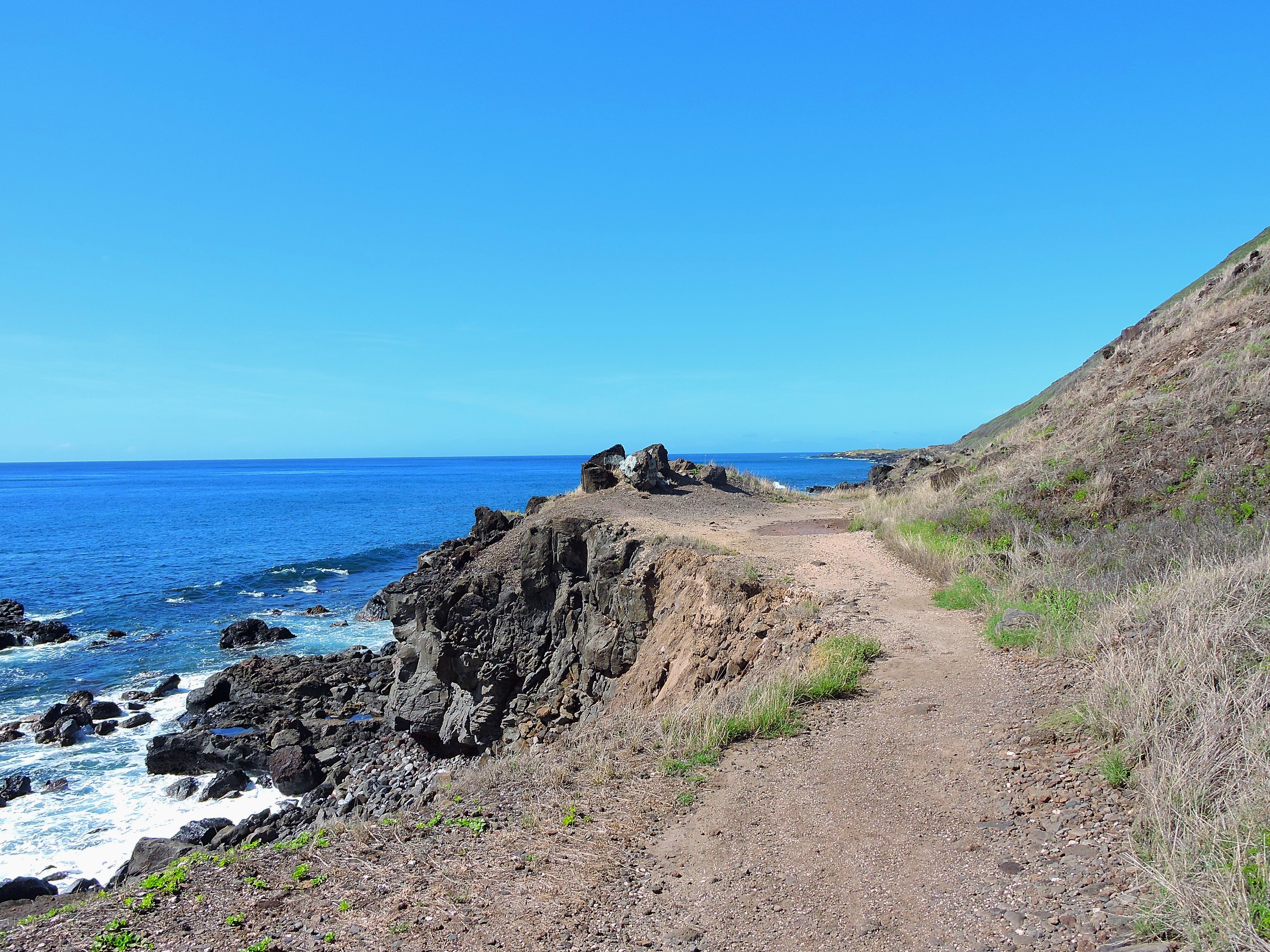
Once I had arrived, however, I enjoyed looking back over the route I had just traveled, and appreciated just how nice a place the birds I was seeking had chosen to be hatched.
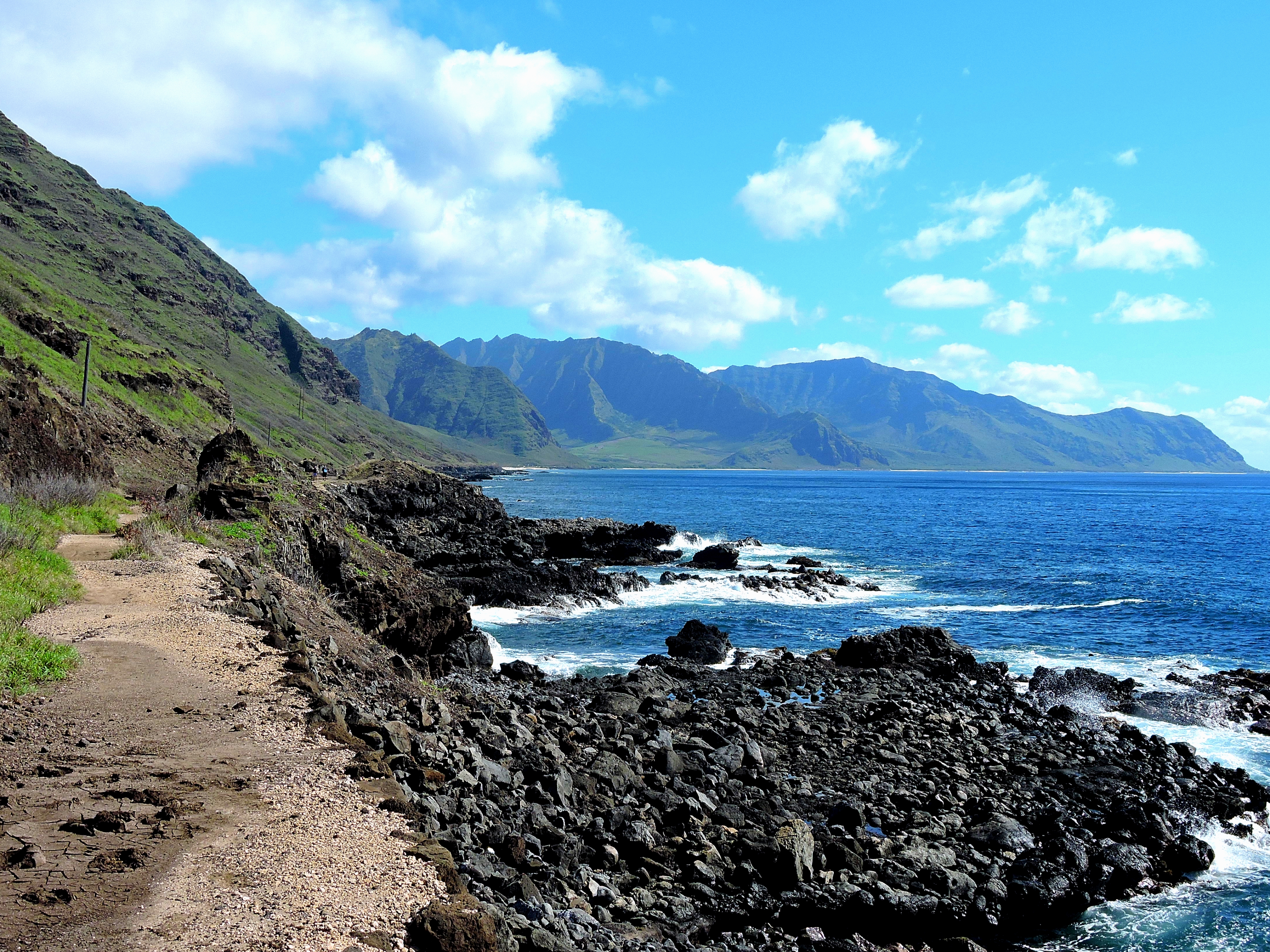
There were some clues to be seen in the area which hinted at the bird's identity.
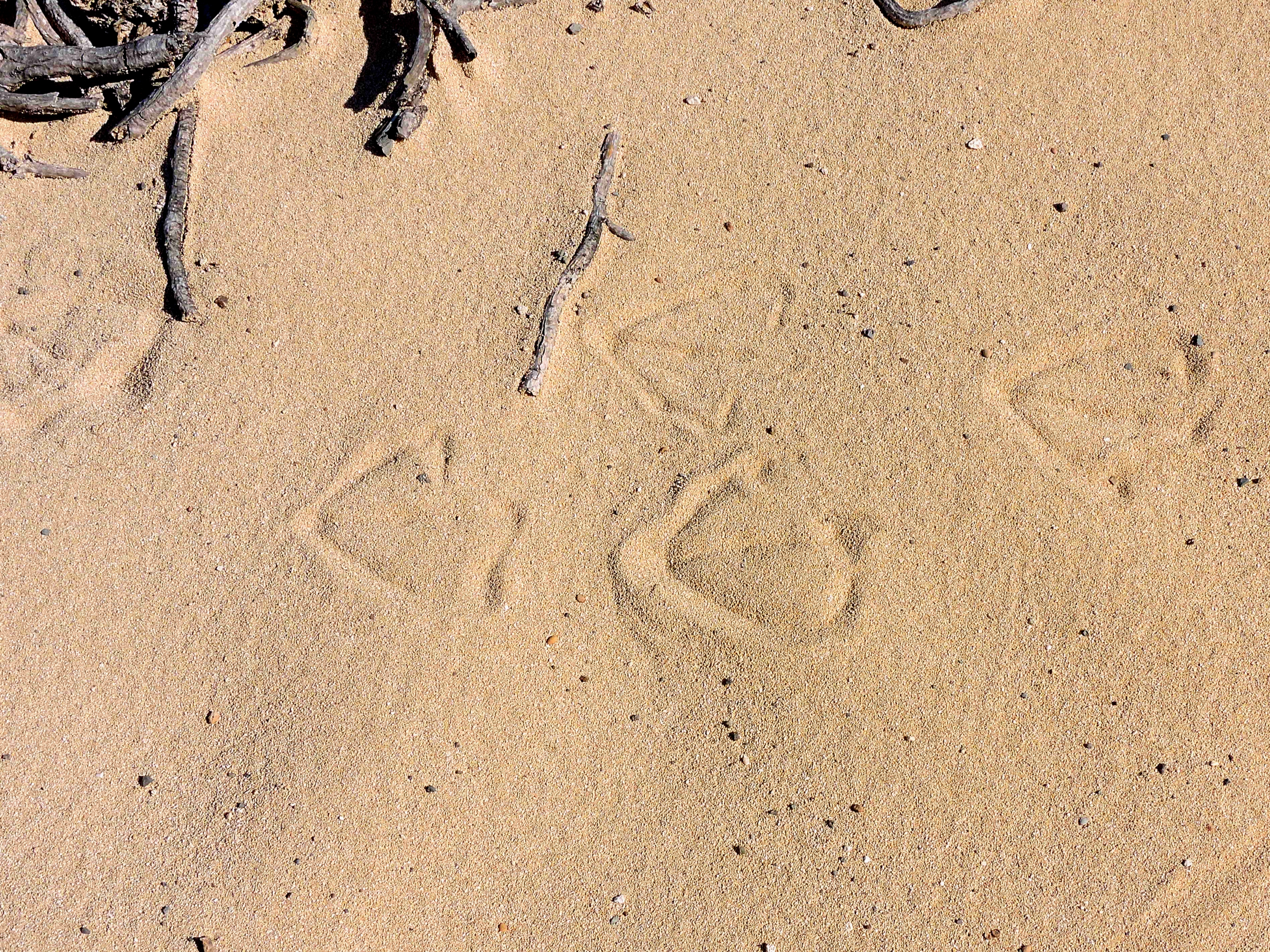
It was Laysan Albatross!
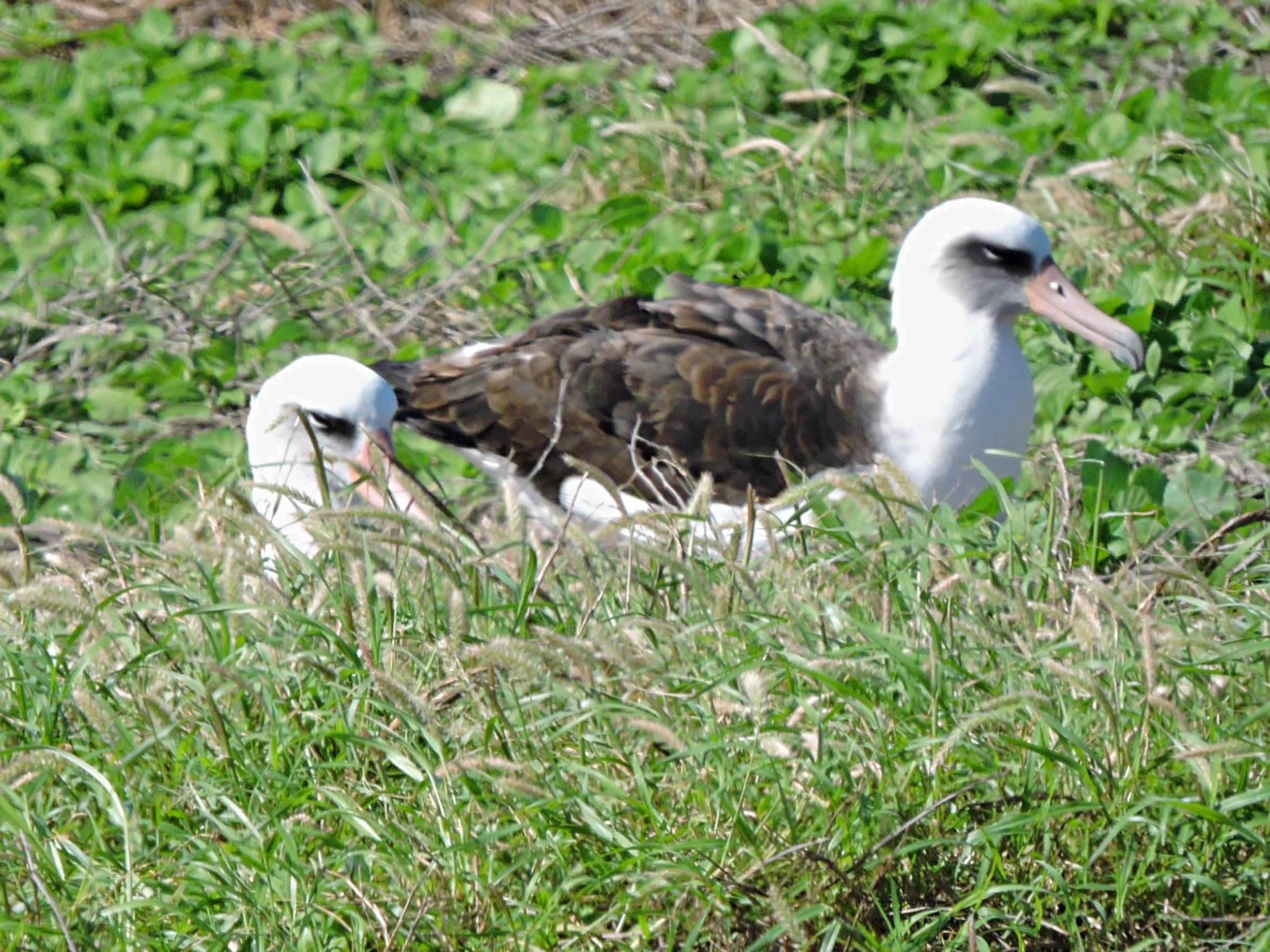
In this image as many as nine possible nesting sites can be seen, but there may have been others.
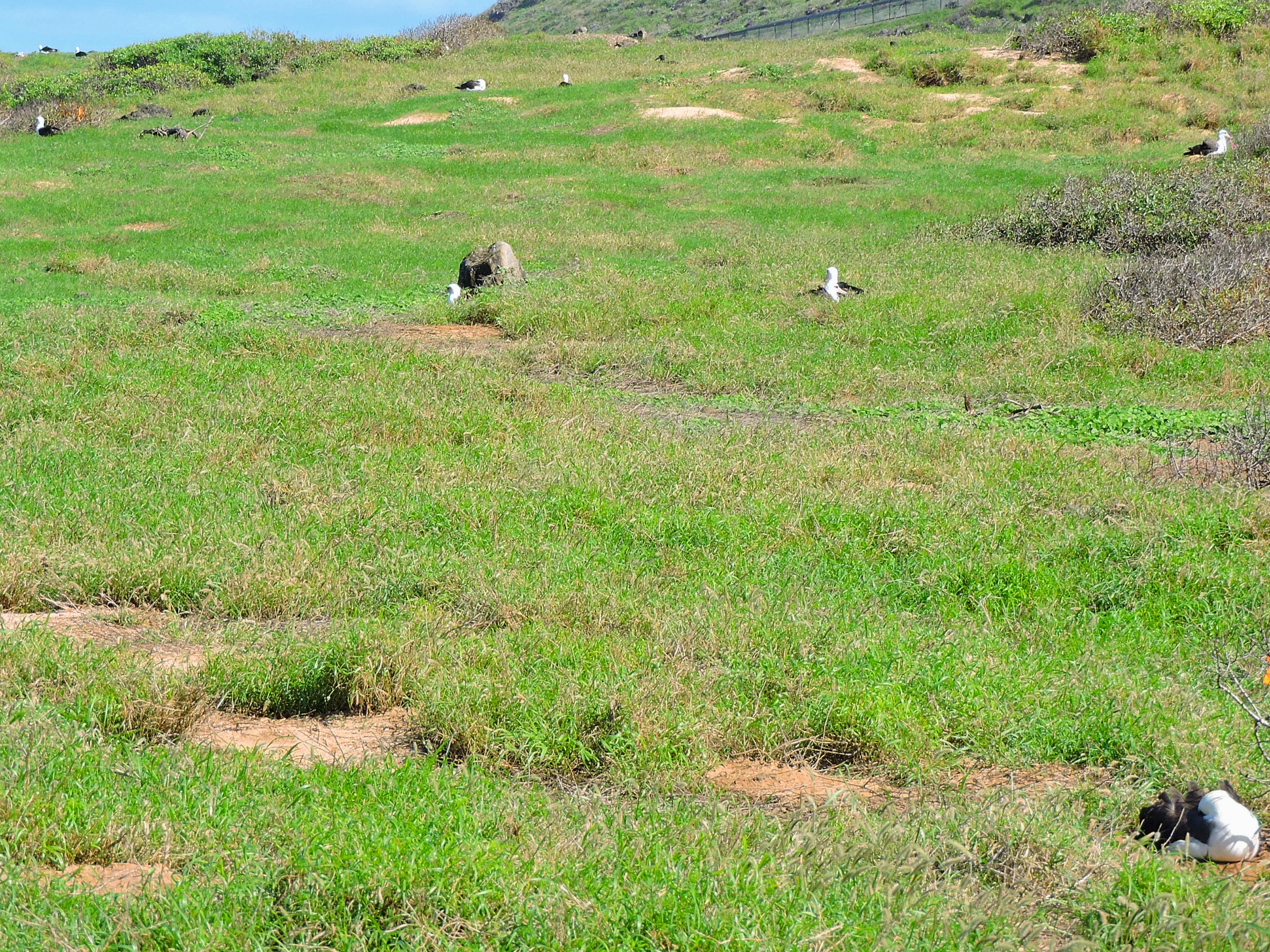
I was especially pleased with this observation because this was only the second member of that family I have seen until then, and because the sightings were close and easy, or at least they were once I was at the site.
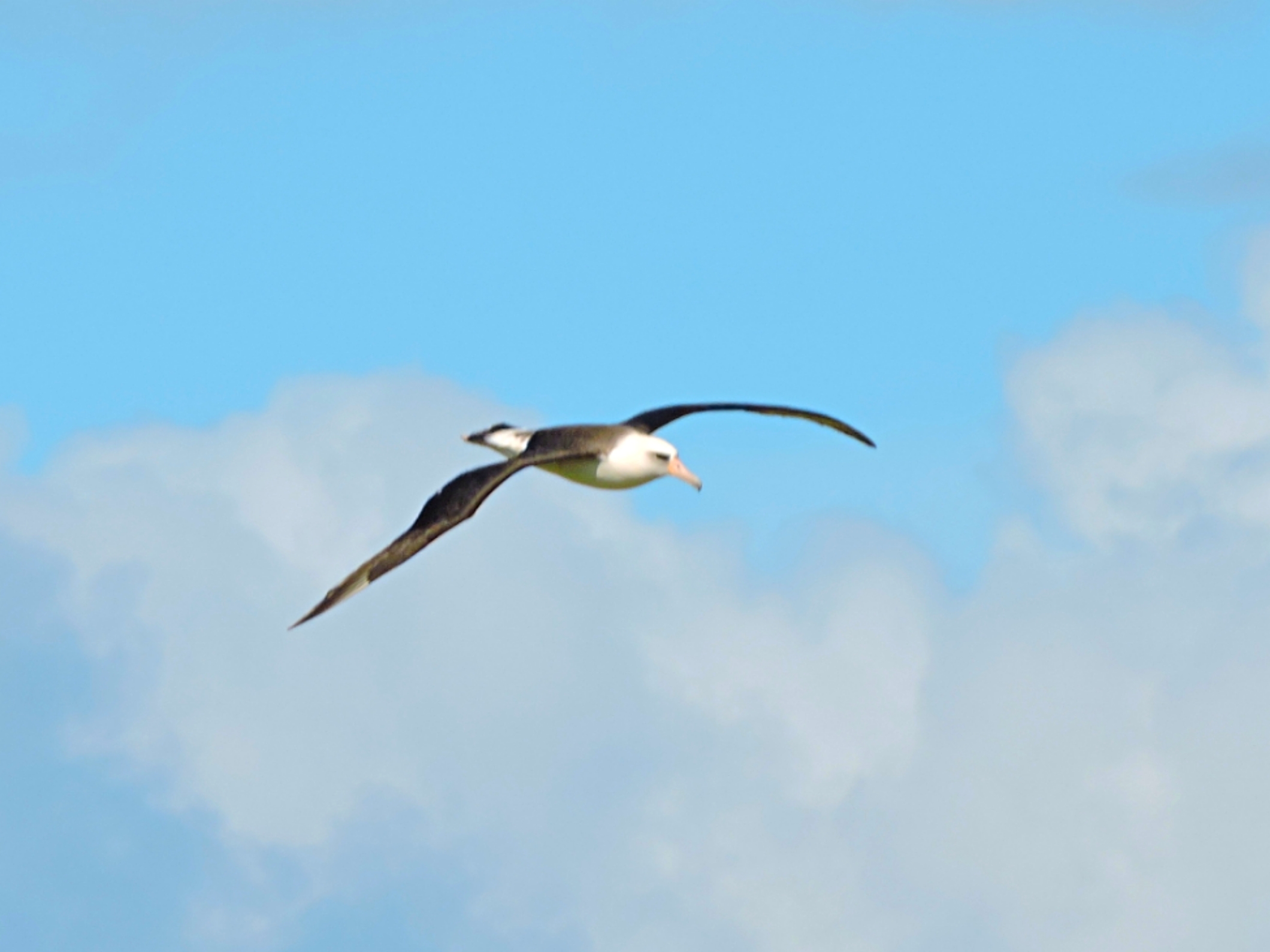
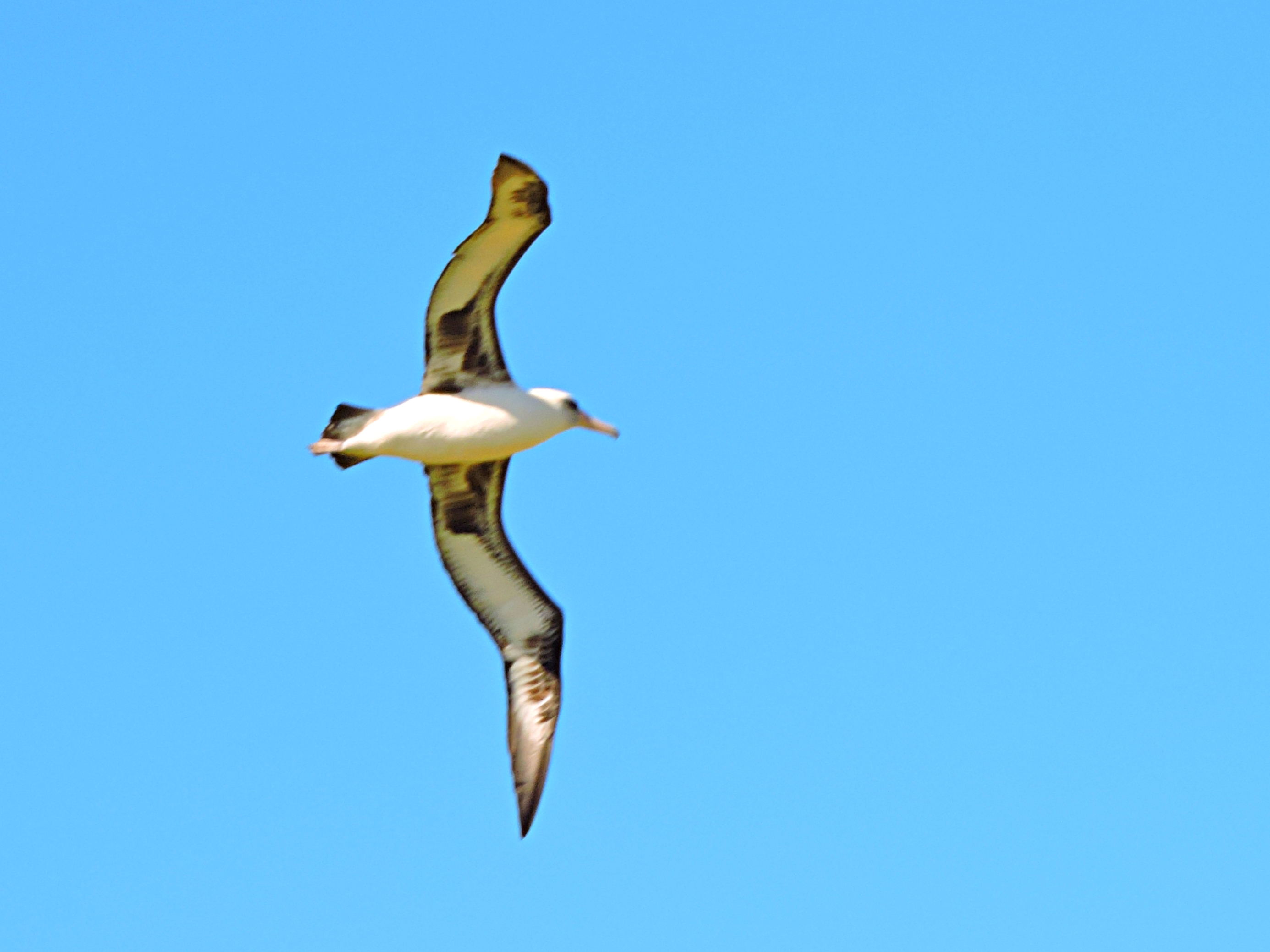
All that was left that day was to double back the same way I came, however, that almost proved to be more than I had bargained for. With the addition of a considerable amount of walking over the sections with the sticky mud, the total of a mere twenty-eight kilometers of travel quickly revealed that the amount of cycling rehab I had put forth in Palau was wholly inadequate, and by the time I made it back to the bus stop I was completely blown. Overall, I must say that it was worth it, however. If my original plans and schedule had not been destroyed by Covid, several months earlier, sometime around May or June of 2021, I would have been in a place where it is common to see as many as six (!) species of Albatross in a single day. This lone example, at least, partially compensated for missing out on that extraordinary opportunity.
Soon, my next flight was underway, with a destination composed of more islands. Those are known as the home for an impressive number of amazing species. Will they be a little easier to see than with some of my recent observations? I certainly hope so, because bird number one thousand is somewhere out there, now virtually within my sight!